Beneath the murky brown waters of the Amazon basin swims flashes of brilliant blue and pearl, darting through submerged forests and rocky crevices. These are the blue acara cichlids, graceful fish named for their dazzling scales of azure and silver.
Table of Contents
Known scientifically as Andinoacara pulcher, blue acaras belong to the Cichlidae family, a diverse group of over 1,700 species. They are closely related to other South American cichlids like the angelfish and oscar fish. While blue acaras only grow to around 6 inches in length, they make up for their small size with eye-catching beauty.
Blue acaras live mainly in the Amazon river basin, residing in vegetated areas and feeding on small invertebrates. They are not rare, but they aren’t the most common aquarium fish either. Their shimmery blue bodies fade to pearl white undersides, with some yellow and green hues mixed in. There are also gold morph and albino variants.
These fish tend to spend most of their time browsing the river bottom and surfaces of submerged trees and plants. While they can inhabit all water levels, they seem to prefer the shaded safety of mid-level waters.
Fun Fact: Blue acaras get their dazzling blues from stacks of tiny color pigment cells under each scale that refract light. This creates their signature glow.
Blue acaras are relatively peaceful, though they can show mild aggression while breeding and defending their eggs. The parents work together, diligently protecting the next generation.
First imported to Europe in 1920, the regal beauty of the blue acara has long captured the attention of aquarists. Their radiant scales and graceful movements continue to make them one of the most sought-after cichlids, mesmerizing fish enthusiasts worldwide.
Key Information
The blue acara cichlid (Andinoacara pulcher) is a beautiful freshwater fish that comes in several color variants, including the common blue coloration as well as gold and albino morphs. This species makes an excellent addition to a community aquarium when provided with good water quality and tank mates that won’t nip at its flowing fins.
| Family | Cichlidae |
| Price | $10-$25 per fish |
| Common Names | Blue acara, blue cichlid |
| Variants | Blue, gold, albino |
| Ideal Tank Size | 30 gallons |
| Water Parameters | Temperature 72-82°F, pH 6.0-7.5, hardness 5-15 dGH |
| Lifespan | 10 years |
| Full Size | 6 inches |
| Natural Environment | Vegetated areas of the Amazon river basin |
| Behavior | Usually peaceful, can show mild aggression while spawning |
| Habitat Preference | Bottom to mid-level areas with plants/decor for hiding |
| Aquarium Decorations | Driftwood, smooth rocks, aquatic plants |
| Ideal Tank Mates | Tetras, rasboras, corydoras catfish, plecos |
| Fish to Avoid | Large aggressive species like oscars |
| Best Foods/Diet | Omnivore – high quality flakes/pellets, supplemented with live/frozen foods |
| Disease | Susceptible to ich and parasitic infections if water quality drops |
| Sex-Switch | No, not a sequential hermaphrodite |
| Gender Differences | Males larger with pointed dorsal/anal fins, females fuller bodied |
| Care Level | Easy to Moderate |
| Breeding Level | Moderate |
Ideal Tank Mates
The blue acara cichlid can make a stunning addition to a peaceful community aquarium. When choosing tank mates, it’s important to select fish that share similar water parameters and won’t nip at the acara’s large flowing fins.
Here are 15 great options for blue acara tank mates:
Tetras
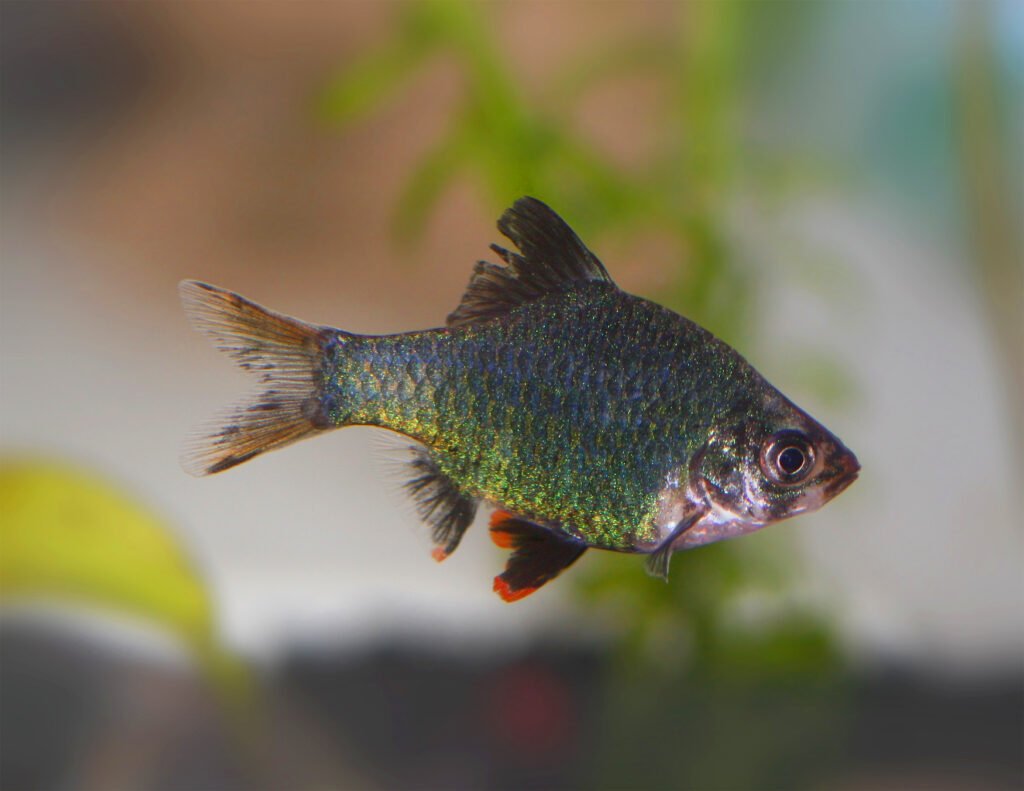
Most tetra species make excellent tank mates for blue acaras. They are peaceful, share the same water parameters, and occupy the upper levels of the tank, leaving space for the bottom-dwelling acara. Great options include neon tetras, rummy nose tetras, ember tetras, black neon tetras, and more. Keep them in schools of 6+ fish.
Rasboras
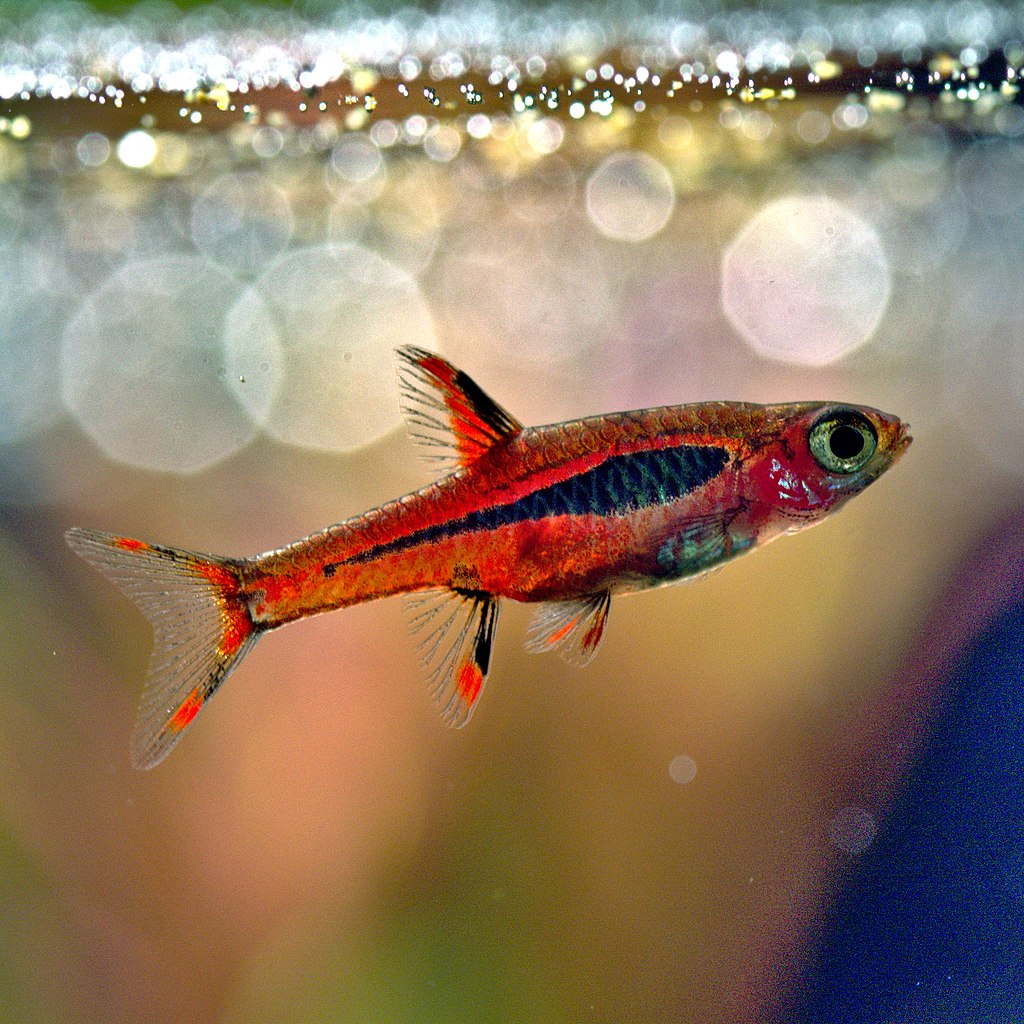
Rasboras are another suitable mid-to-upper level tank mate for the blue acara. Consider vibrant harlequin rasboras, chili rasboras, galaxy rasboras, and others. Their colors contrast beautifully against the blue acara. Maintain schools of 6+ rasboras.
Hatchetfish
Small hatchetfish like marbled hatchetfish reside at the very top of the tank thanks to their upward facing mouths. This keeps them out of the way of blue acaras while providing movement and interest near the surface.
Corydoras
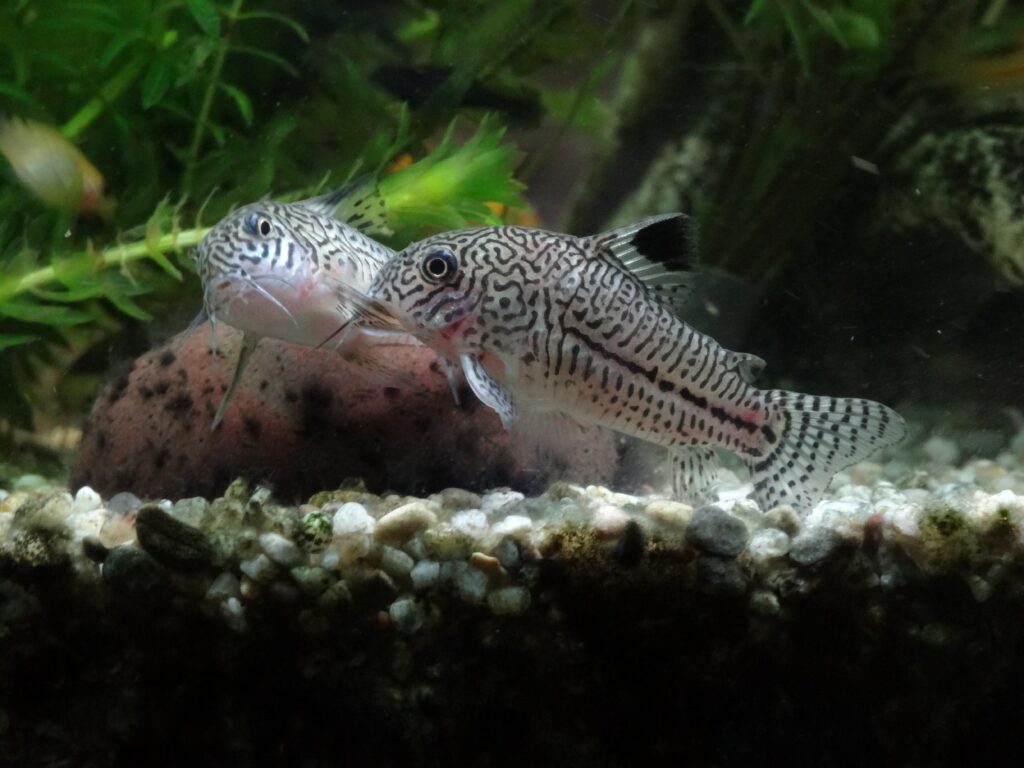
Armored bottom feeders like corydoras catfish make perfect substrate cleaning crew tank mates for blue acaras. Bronze corydoras, panda corydoras, and pygmy corydoras are all excellent options. Have a group of 6+ corydoras.
Plecos
Common pleco species like bristlenose plecos and clown plecos thrive in similar conditions as blue acaras. They keep algae in check and prefer planted tanks. Choose smaller varieties that won’t outgrow the aquarium.
Killifish
While not all killifish work with cichlids, some peaceful species like gardneri killies and lampeye killies can make suitable tank mates. They tend to dwell in the middle tank levels apart from the acara. Thoroughly research species before mixing.
Dwarf Gourami
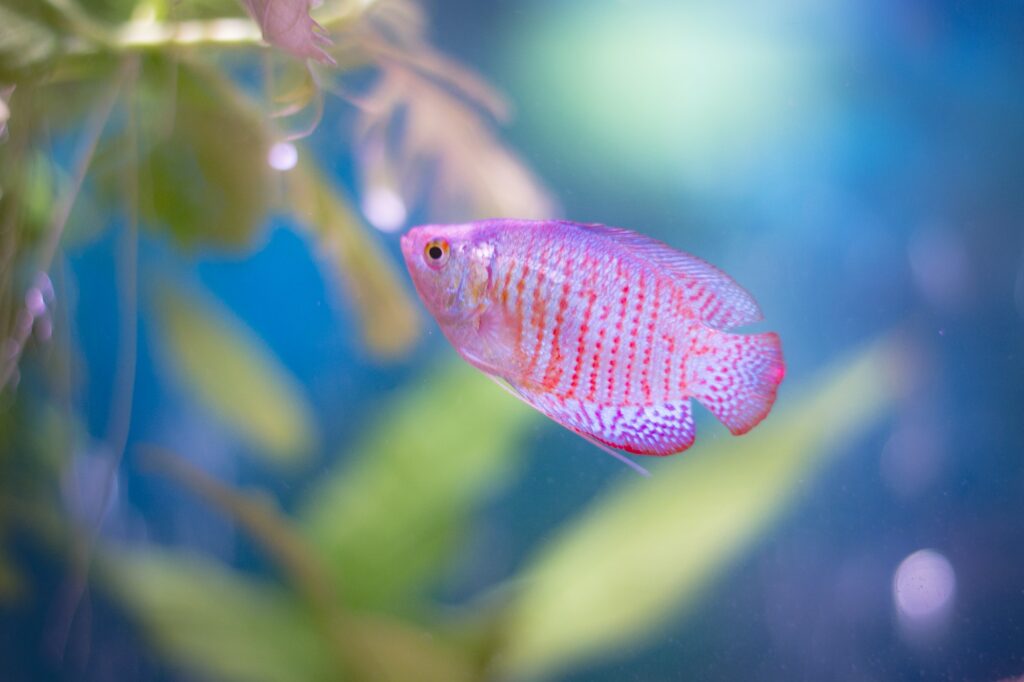
Of the gouramis, honey dwarf gouramis and thick-lipped dwarf gouramis are among the best options for a blue acara tank. Still, watch for aggression and have backup tanks available.
Swordtails
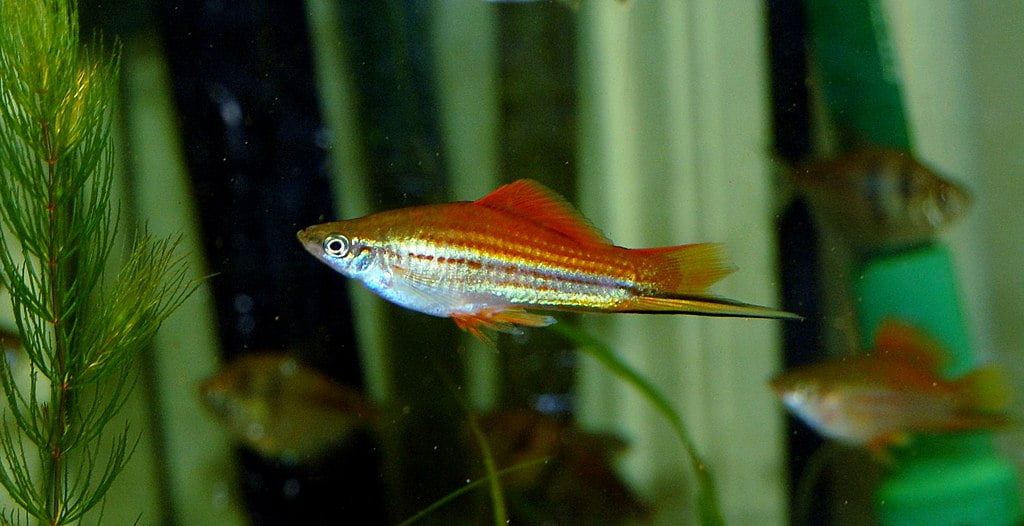
Male swordtails are livebearers that can work with blue acaras. Their elongated fins and body shape contrasts nicely against the stockier acara. They also enjoy moderately hard, alkaline water parameters.
Platies
Peaceful tuxedo platies, mickey mouse platies, and other color morphs can add interest to an acara tank. Stick to male platies since females could potentially crossbreed with acaras. The males stay mid-level and leave space for acaras below.
Mollies
While from different continents, mollies adapt well and share similar water needs to blue acaras. Male black mollies, dalmatian mollies and balloon mollies are options. But no female mollies, since they could crossbreed with the acara.
Guppies
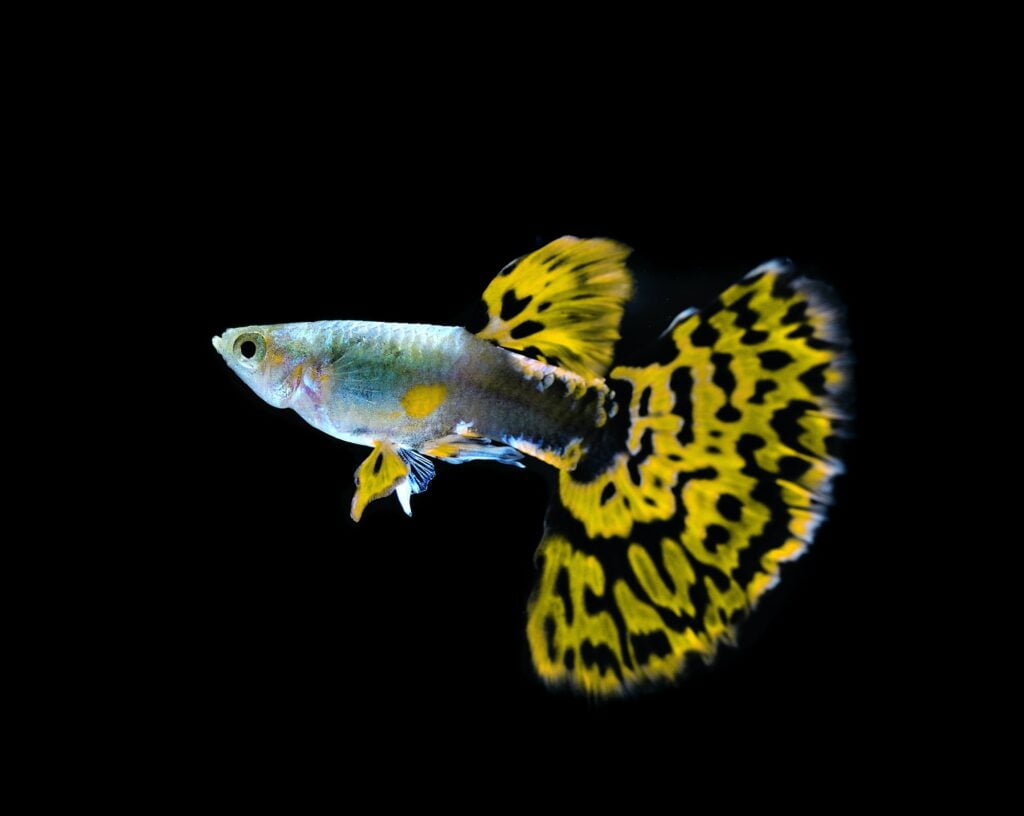
Male fancy guppies will add ample color to the upper levels of a blue acara aquarium. Selectively bred strains stay relatively small and peaceful. Avoid wild type guppies which may fin nip at acaras.
Pencilfish
While uncommon in home aquariums, beckford’s pencilfish and other pencilfish dwell at various tank levels and school around plant and hardscape centerpieces. Their long thin shape contrasts the stocky blue acara shape.
Dwarf Rainbowfish
Small dwarf rainbows like threadfins and praecox rainbows acclimate well to South American setups. They stay under 3 inches in length, thriving in the middle and upper water column of the tank.
Cherry Barbs
While regular barbs may be nippy, vibrant cherry barbs are among the most peaceful barb species. They can work with placid cichlids like blue acaras when kept in schools of 8+ barbs. Mix them with other nano schooling fish.
Zebra Danios
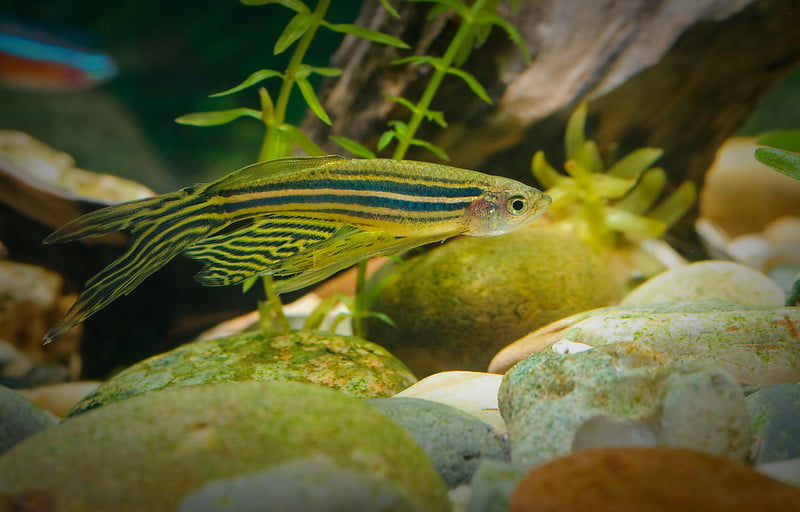
Hardy fish like zebra danios make suitable upper tank level schooling fish for blue acaras and other docile cichlids. Their horizontally striped pattern provides a nice contrast to the blue acara’s metallic sheen too. Keep them in large groups.
FAQs
What Tank Decor Should I Use for Blue Acaras?
Blue acaras appreciate planted aquariums with plenty of hiding spots. Include smooth rocks, driftwood, terracotta pots, and dense vegetation like Amazon sword plants or java fern. Leave open swimming space between decorations and use a soft sandy substrate.
Are Blue Acara Cichlids Hardy Fish?
Yes, blue acaras are generally hardy, resilient fish when provided with good water quality and compatible tank conditions. They tend to tolerate a range of water parameters. However, extreme shifts in pH, hardness and temperature can stress them, making them prone to ich and fungal infections.
What Aquarium Mates Work Best With Blue Acaras?
Good aquarium mates include smaller tetras, rasboras, hatchetfish, catfish like corydoras, and dwarf cichlid species. Avoid fin-nipping fish or large aggressive species that could bully or prey on blue acaras. Verify any cichlid tank mates are peaceful toward slightly smaller fish.
To determine the sex of Blue Acara Cichlids?
Mature males grow a little larger than females and develop more pointed dorsal, anal, and tail fins compared to the female’s rounded fins. Females also display slightly pinker bellies whereas males have bright blue-white undersides. But sexing juveniles and subadults can prove very difficult.
How Do You Breed Blue Acara Cichlids?
Getting blue acaras to spawn takes perfect water parameters and feeding. They form monogamous pairs and lay eggs on flat surfaces. Parents guard the eggs and free-swimming fry aggressively. Leave the parents to raise the babies or remove them once eggs hatch for highest fry survival rate.
What Common Diseases Affect Blue Acaras?
Provided clean water, varied diet, and proper habitat, blue acaras stay relatively healthy. However ich, fin rot, bloating, and internal parasites can sometimes occur. Quarantine new fish to prevent introducing pathogens. Monitor water parameters routinely and feed foods with probiotics to promote good immune system function.